The Sky Over Soneva
- Barefoot Bookseller
- Apr 25, 2022
- 5 min read
Words by Lars Lindberg Christensen & photos by Petr Horálek
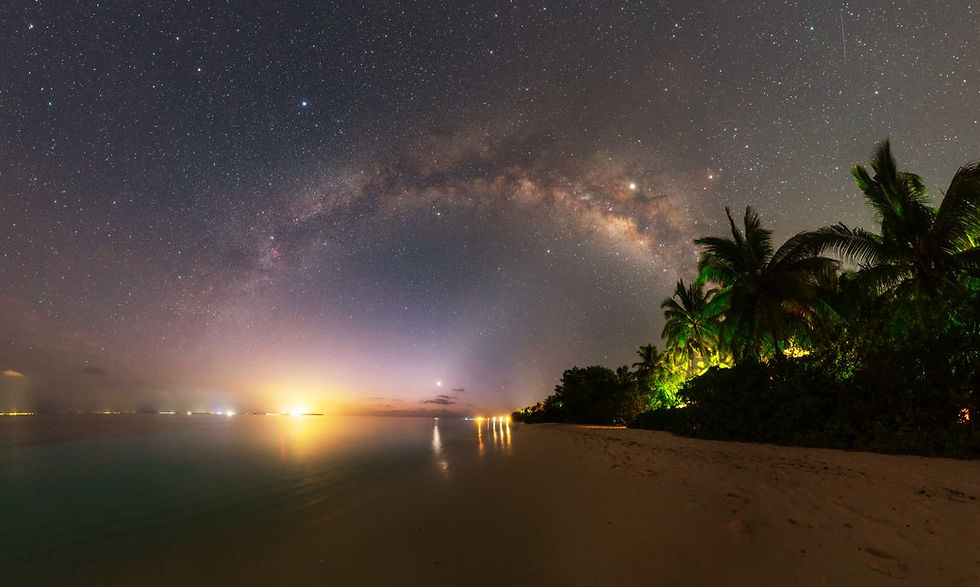
Early on, Sonu and Eva Shivdasani decided to build the first observatory in the Maldives at Soneva Fushi. It is still unique and one of the most popular experiences offered here. The sky over Soneva Fushi holds a special place in their hearts, as well as in ours. Lars has been to Soneva Fushi and Jani several times as Visiting Astronomer and Petr has visited to capture the night sky on camera, in a way never done before.
Astronomy is the science that studies the origin and evolution of the Universe and everything in it. This definition seems simple, but the Universe is a vast place, filled with fascinating celestial objects of all sizes, shapes and ages, and with amazing phenomena. Both Petr and I got into astronomy at a young age, fascinated by how it has repeatedly revolutionised humanity’s cultural and scientific history, how we think, and the way we see our place in the larger Universe.

Like any science, astronomy makes advances as a result of the accumulation of knowledge. Sometimes steady progress is accelerated by sudden breakthroughs in technology and thought, such as the revolutionary idea of the Heliocentric view of the Solar System and The Big Bang Model. The Big Bang Model tells the story of the evolution of the Universe. Around 14 billion years ago, the just-born “Universe” was infinitely small and hot. A sudden and continuing expansion and later cooling led to the formation of the fundamental building blocks of atomic and subatomic particles, which allowed the formation of galaxies, stars, planets and eventually life. Astronomers believe, based on the data so far, that the expansion of the Universe is mainly driven by a mysterious form of energy called Dark Energy.
But astronomy is not just about scientific advances or technological applications: it gives us the opportunity to broaden our limited horizons, and discover the beauty and grandeur of the Universe and our place in it. This view sometimes referred to as “the cosmic perspective”, is one of the most important contributions of astronomy to humanity. Only by observing the Universe, can we gain a deep understanding of the fragility of our existence here on Earth.
So why is the night sky over the Maldives so special? We’re far from the light pollution of big cities, which enables us to appreciate the sky in all its beauty. And being on the Equator, we can see the entire sky! Polaris, the north star, is essentially at the horizon in the north and the south polar point opposite in the south. As the Earth revolves around its axis the sky seems to turn above our heads, revealing new constellations in the east. Over a year all the 88 constellations will be visible from the Maldives in the evening sky.
The centre of the Milky Way is very prominent from here as well, and we can enjoy the view of the two Magellanic Clouds — satellite galaxies to our Milky Way.
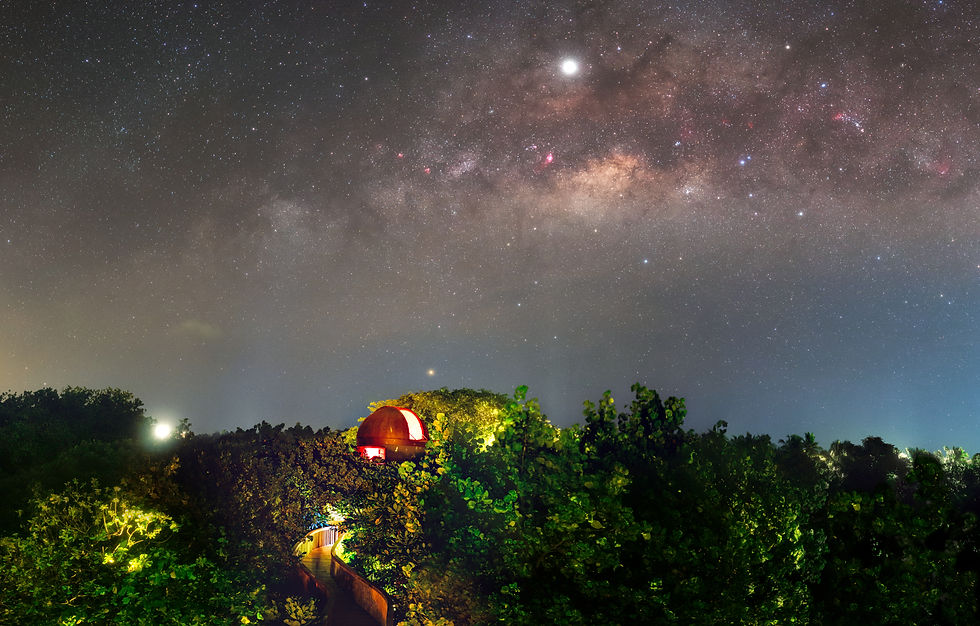
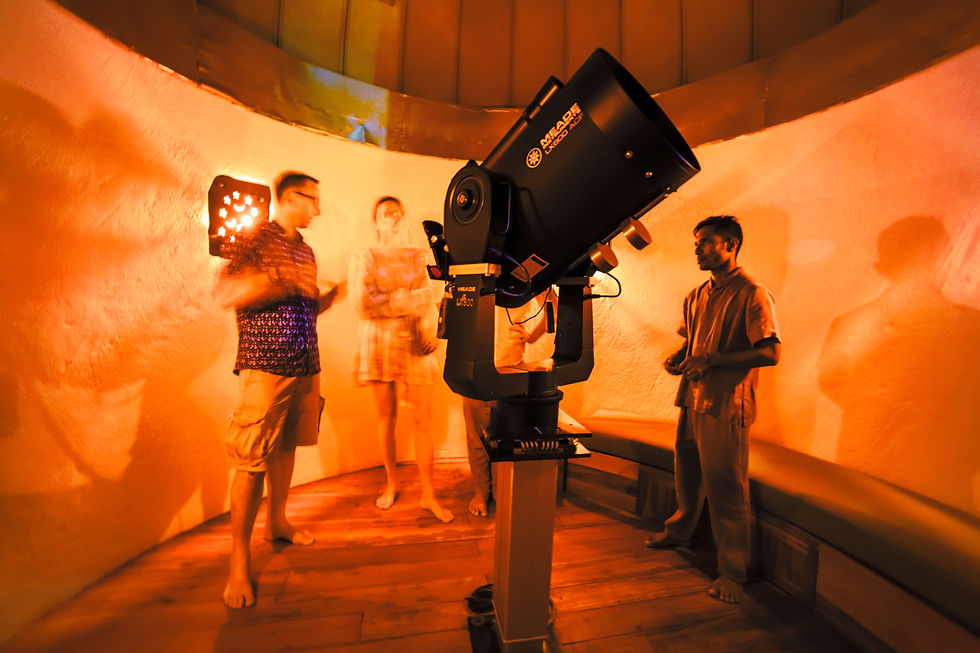
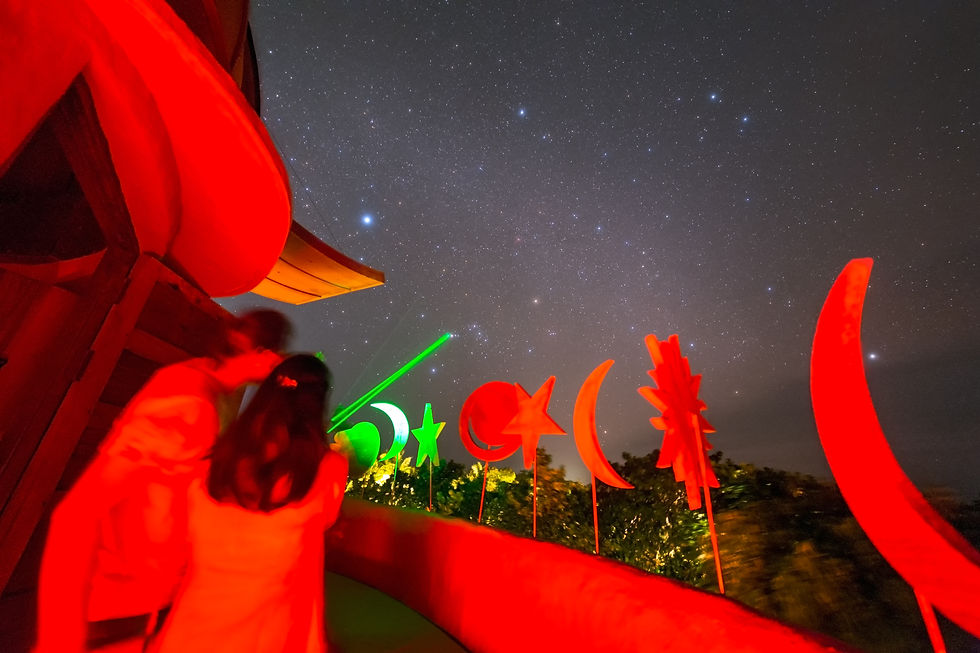
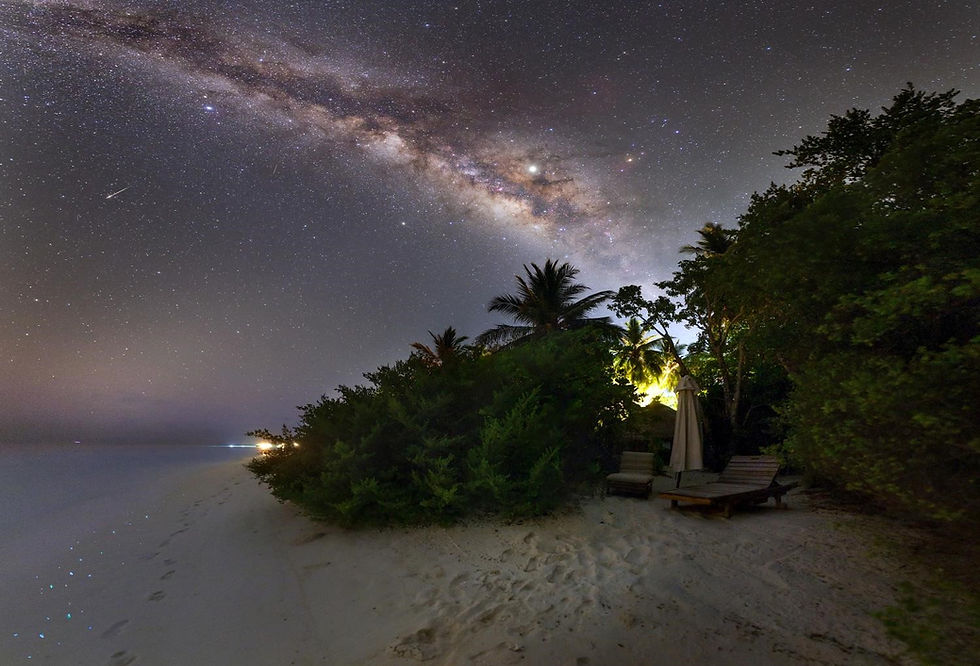

Due to the dark skies and the fast sunset at the equator, satellites like the International Space Station can often be seen travelling through the nights sky.
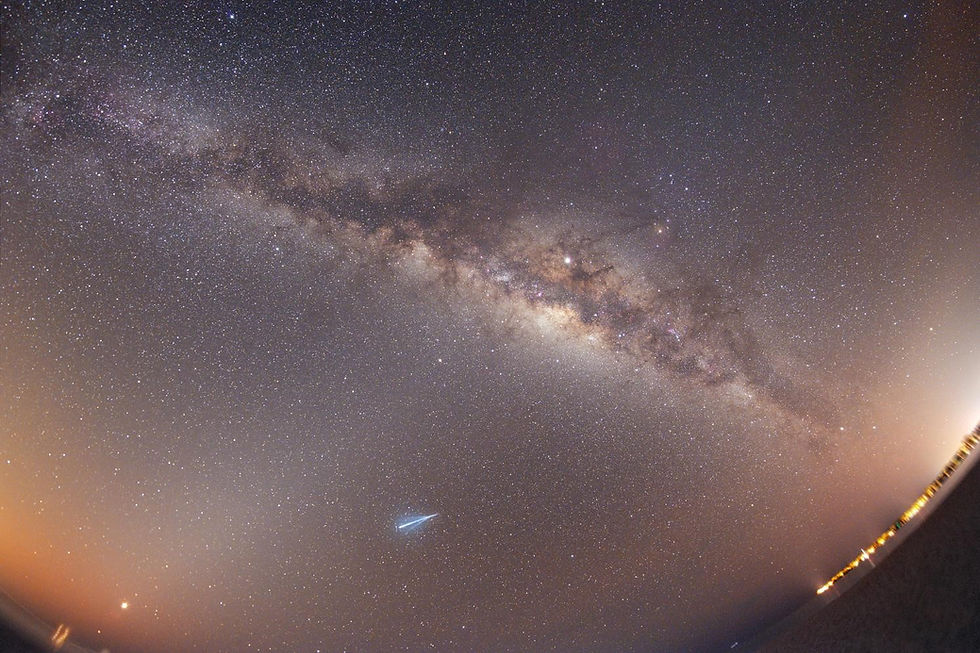
Several interesting atmospheric phenomena take place during dusk and dawn, and are associated with the setting and rising of the Sun and Moon.
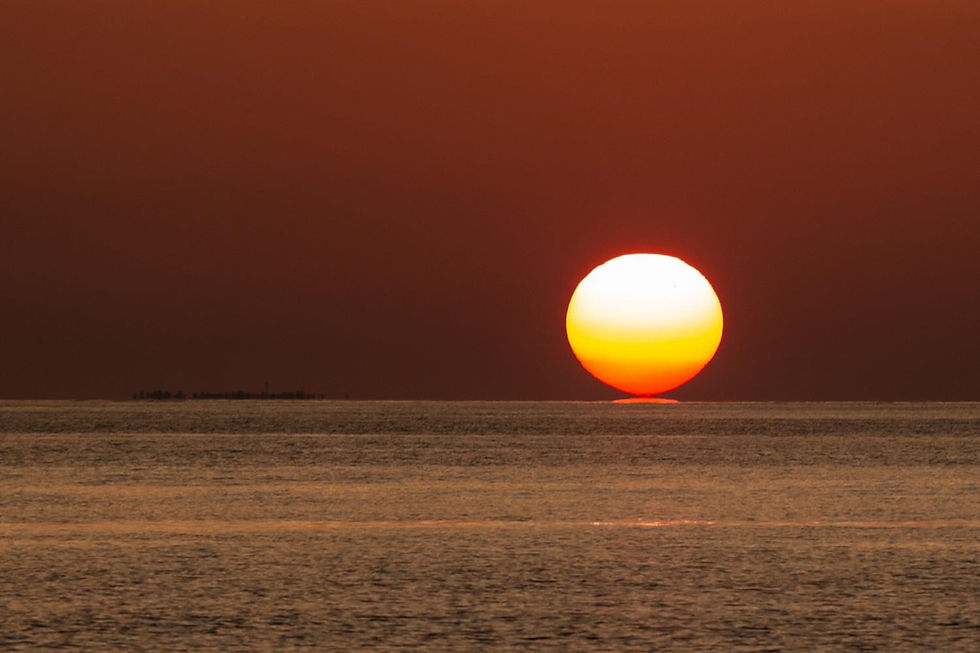
The colours of sunrise and sunset are usually very dynamic over Soneva Fushi. This is because the colour and appearance of sunsets are very sensitive to the clouds and the contents of aerosols in the upper atmosphere — no two sunsets are identical. Exceptional circumstances can have a big impact too; powerful volcanic eruptions, for example, can increase the dust content at 15–30 km altitude in the atmosphere which can create particularly magnificent sunsets.
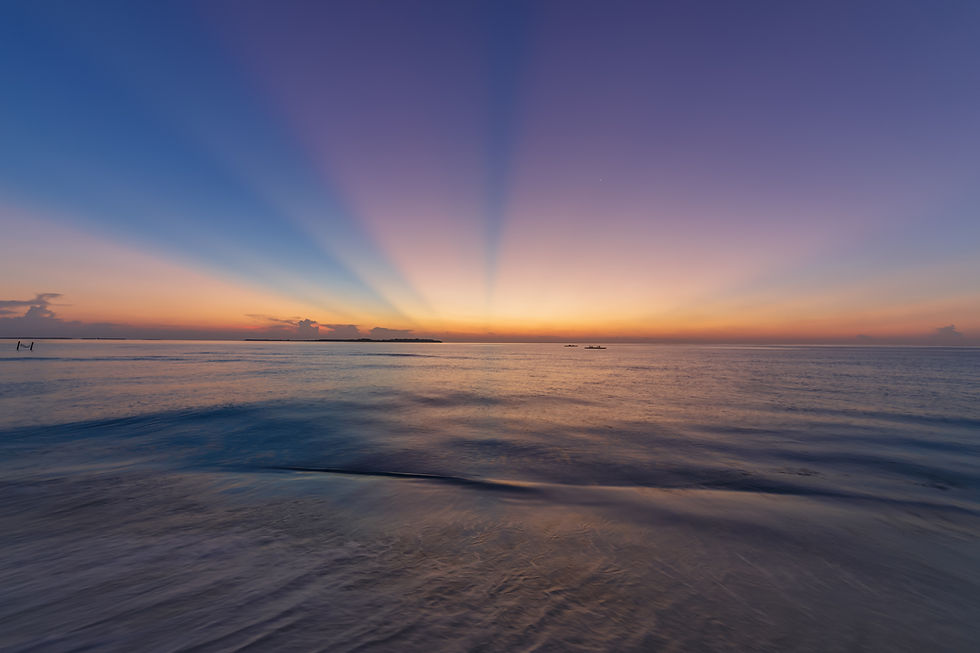
Sunsets mark the daily transition from light to darkness, and can be among the most beautiful and evocative light phenomena that can be seen in the sky. Everyone on the planet has experienced the change in light and its effects on their mood when the Sun disappears and the night begins.
Most will have seen the powerful rays of light that sometimes shine through cracks in cloud cover and illuminate the land below. Especially in rainy weather, these rays can make for a dramatic scene. They are also quite often visible at sunset, when they shine from the top of clouds or through gaps in the clouds.
They are called crepuscular rays, and are recognised in cultures throughout the world, in many of which they are known by beautiful and exotic names. In Polynesia they are called “Maui's rope”, in Asia “Buddha's rays” and in England “Jacob’s ladder”.
They are easier to see if there is a little dust or haze in the air that the rays can “draw” in.
Few people are aware that we still see the Sun for a few minutes after it has moved below the horizon. The reason we still see it in the sky is that its rays are refracted by the atmosphere, raising the image of the solar disc by about a diameter on average as it sets. In other words, the Sun’s apparent movement towards the horizon is slowed down by the refraction.
The refraction happens because the light rays travel more slowly as they pass through the Earth's atmosphere. The lower the Sun is, the further the light rays travel through the atmosphere, the slower they become, and thus the more they are refracted. The effect is measurable — even when the Sun is high in the sky — and it is an important thing for navigators and astronomers to keep track of. The size of the refraction varies from day to day, so the observed sunset time can change from one day to the next by as much as 5 minutes. We can therefore not rely on an ephemeris [A table giving the coordinates of a celestial body at specific times during a given period.] to predict the observed sunset time with perfect accuracy.
Another, very frequently occurring, effect of refraction is that the Sun and Moon never appear perfectly round as they approach the horizon and the solar disc looks flattened when the Sun is about to set. The amount by which the rays are refracted increases closer to the horizon, so rays from the upper edge of the solar disc are less refracted than those from the lower edge. The result is a compression or flattening of the solar or lunar disk. Occasionally, the shape of the flattened disc may be disturbed by the layers in the atmosphere, giving rise to the Chinese lantern effect. This effect is due to adjacent atmospheric layers having different temperatures, and thus refracting the light by different amounts. It is called differential refraction, and causes the solar disk to appear layered. In photos, the subtle details of the Chinese lantern effect can be better seen.

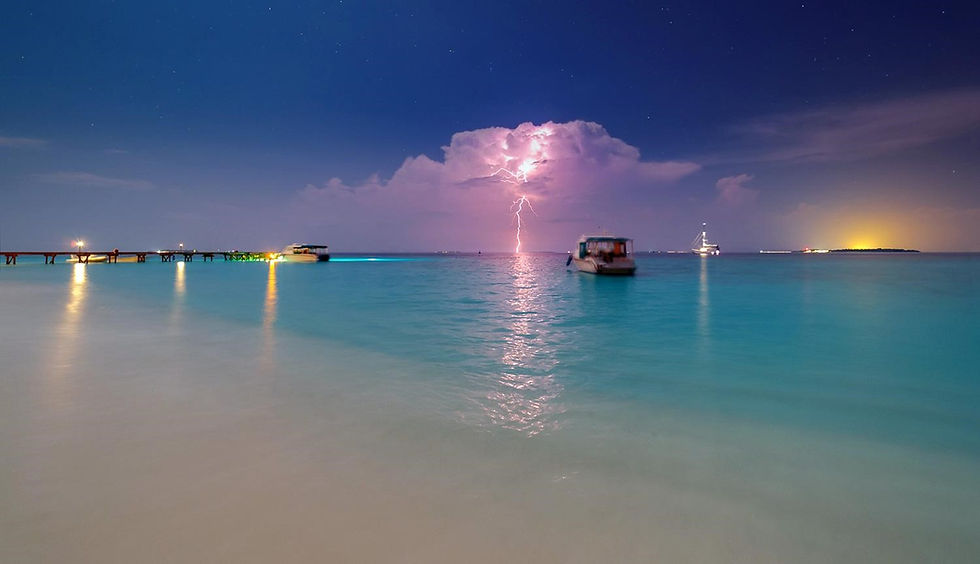


Dr Lars was the visiting astronomer at Soneva Fushi over Easter. He works with some of the largest land-based observatories in the world and his trips to Soneva are always as entertaining as they are educational. I was lucky enough to get to know him not only through my nights working in the observatory but also when he became the guest quizmaster at our quiz night on the sandbank. He has a real talent for explaining the skies to everyone from adult amateurs to child prodigies. He usually had his pocket full of pieces of meteorites and was able to answer every question about life on other planets and celestial phenomena and we're very grateful to him for taking the time to write for the booksellers' blog.
All photos are courtesy of P. Horalek & L.L Christensen




If more people that write articles really concerned themselves with writing great content like you, more readers would be interested in their writings. Thank you for caring about your content. I also wanna talk about the best remanufactured laptops.
The blog post "How Many Languages Can You Learn? Become Multilingual or Hyperpolyglot" by Australian Translation Services offers valuable insights into the potential of mastering multiple languages. It discusses factors influencing language acquisition, such as age, motivation, and exposure, and addresses challenges like time constraints and language interference. Whether you're aiming to become multilingual or a hyperpolyglot, this guide provides practical advice to enhance your language learning journey.
This page offers over 70 creative student council ideas to enhance school spirit and engagement. From organizing themed events like "Dress Like Your Teacher" and "Battle of the Bands" to initiating community service projects and fundraising activities, there's something for every school. These ideas aim to foster a sense of unity and involvement among students, making learning more enjoyable and memorable.
This guide on personal letter format is super helpful! I’ve always been confused about how to properly structure a personal letter, but the examples and tips here made it really easy to understand. Thanks for breaking it down so clearly!
MetaMask is a secure and user-friendly crypto wallet and gateway to blockchain apps. Easily manage Ethereum and other assets, interact with dApps, and enjoy seamless Web3 experiences directly from your Chrome browser. Trusted by millions, MetaMask ensures your digital identity and assets are always under your control. Install now to explore the decentralized web with confidence. Metamask Chrome Extension | Metamask Chrome